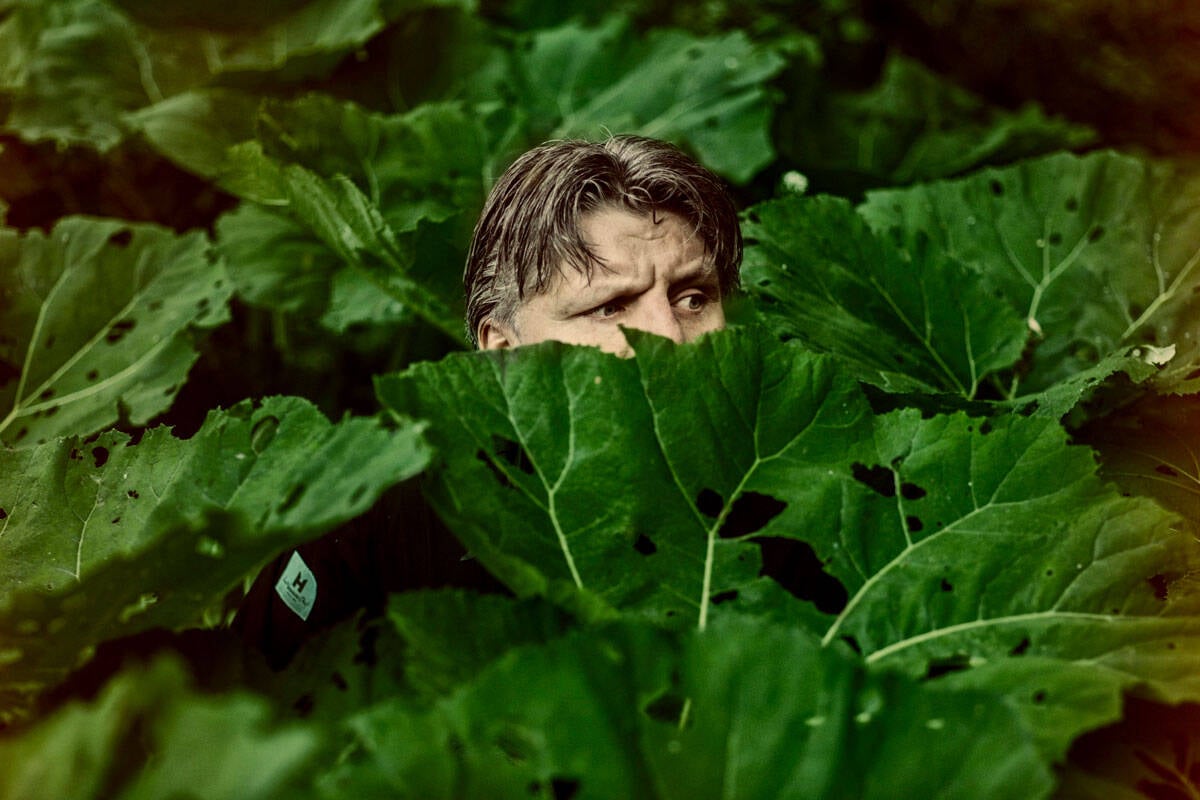
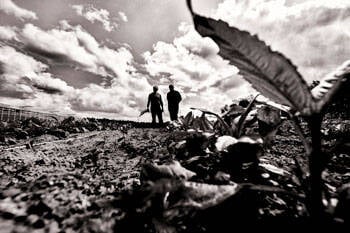
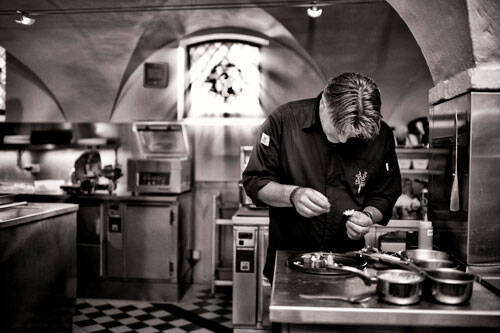
Finally: Jonnie is also typically Dutch in another way. He is informal, averse to hierarchy and resourceful. He follows his own path and doesn’t care about culinary trends. In the same way Mozart saw the piano and Cruijff saw the ball, Jonnie sees the kitchen. He is the Dutch kitchen, an idiosyncratic talent who follows his feelings. Of course, he falls and makes mistakes, but he learns and perseveres.
At the Food Inspiration Days in 2011, he caused furore by offering all visitors to this event something special: a playful reference to the Dutch identity, but then wrapped in a three-star Michelin jacket: the edible sigaret! A gourmet spliff served in a plastic tube, of course with no hallucinogenic effect. The Michelin sigaret with lemongrass was given a standing ovation, from more than a thousand colleagues.
Of course Thérèse and Jonnie listen to their guests. Their satisfaction is the most important. But during the creative process when new dishes are being created, they don’t let other people's opinions distract them. The process of creation starts with Jonnie himself, from his memories of Giethoorn, his discoveries, new techniques he learns and associations he comes up with himself. After creating something new, they will only ask their guests if the taste is to their liking. By working in this order - Jonnie makes sure his inspiration comes from within and not from what’s popular in the outside market. It guarantees authenticity in its greatest form. And with that, Jonnie Boer has become the international face of Dutch gastronomy.
Authentic approach
Jonnie’s restaurant is located in the historic city center of Zwolle, about 100 kilometers east of Amsterdam. But in fact, the place where he grew up and where he discovered the secrets of nature is Giethoorn, also called Dutch Venice because of the many bridges and waterways. The video below depicts Jonnie in the waters around Giethoorn. He rides in a "punt (point)” the name of the wooden boat that used to carry cargo.
Jonnie is inseparable from his wife Thérèse Boer, the restaurant's maître sommelier. Just like Jonnie, Thérèse has also reached the pinnacles of her profession. She is considered one of the best hostesses and sommeliers in the Netherlands. Together they create the authentic style of their restaurant De Librije.
Dutch Venice
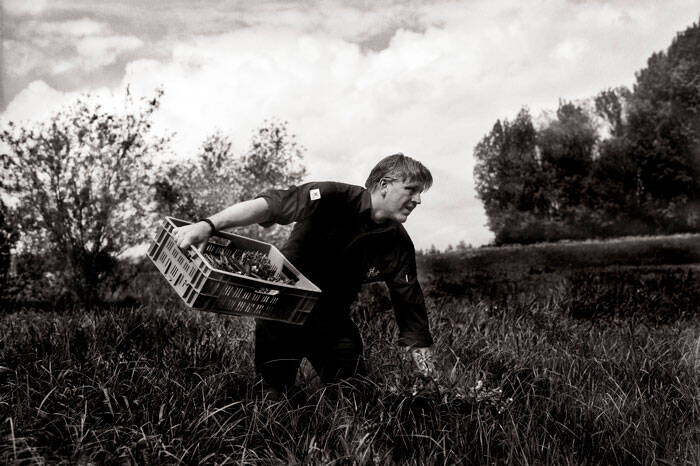
With the arrival of Jonnie Boer, Dutch gastronomy changed into a kitchen in which you can recognize time and place. Boer never traveled to France to learn the trade. Instead he had the greatest teacher: Dutch nature. “I don't see the point in getting beans from Kenya if I can replace them with a Dutch salad or string bean”, he says in his inspiring cookbook Puurst. And so we read how Jonnie uses meadowsweet, cattail and how he puts tulip bulbs on his menu.
Jonnie uses a lot of special techniques. For example, early on he learned how to milk birch trees. Through a hole in the bark, via a hose, he lets the juice of the tree run into a bottle. Back in the day juice from birch trees was the lifeblood for lumberjacks and was therefore called lumberjack's milk. Jonnie now boils the milk into a thick syrup and uses it in desserts.
Tulip bulbs
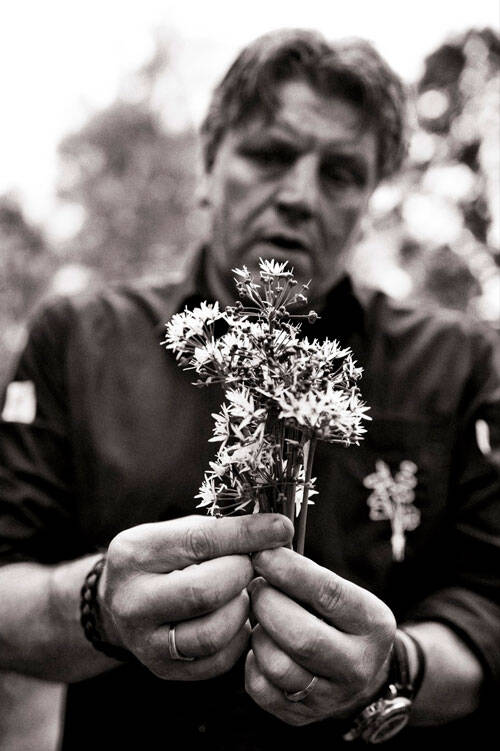
To understand the revolutionary aspect of his approach, we should realize that gastronomy in the Netherlands only got its own identity during the 1980s and 1990s. The food culture of the Netherlands before that time – developed after the Second World War – was entirely French inspired. If you wanted to make a name for yourself as a chef, you knocked on the door of a French restaurant where you were taught the trade in a heavy-handed manner. That knowledge was taken back to the Netherlands and sold unadulterated. So in the Netherlands, people were cooking and eating French for a long time.
There’s no other chef in the Netherlands as Dutch as Jonnie Boer. And by Dutch we don't mean that he bakes the best pancakes or serves fries with mayonnaise instead of ketchup. No, the chef is the most Dutch, because in his kitchen, regional ingredients have the leading role, even before this became the common mantra of the modern top chef.
He is considered to be the most prominent chef in the Netherlands. Jonnie Boer, awarded with three Michelin stars since 2004, focuses on the flavor of his region. He himself sails the Dutch waters, catches pike and eel and harvests his own plants, the same way his ancestors did. If the word authentic is worn out, look, listen and taste the universe of Jonnie Boer. A more pure kitchen doesn't exist.
Hans Steenbergen Rahi Rezvani Jonnie Boer
Xiao Er Kong
Authenticity means remaining true to yourself
Master of the Dutch cuisine
Jonnie Boer
interview
6 min
authenticity means remaining true to yourself
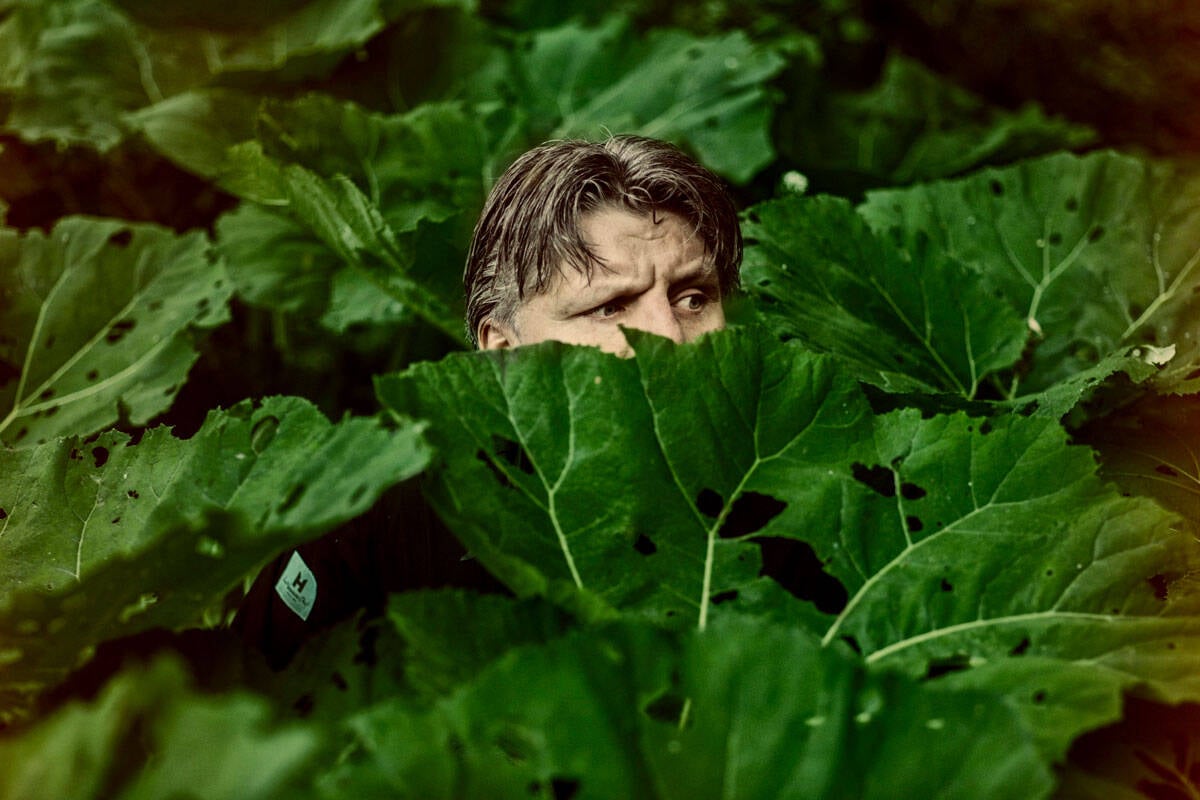
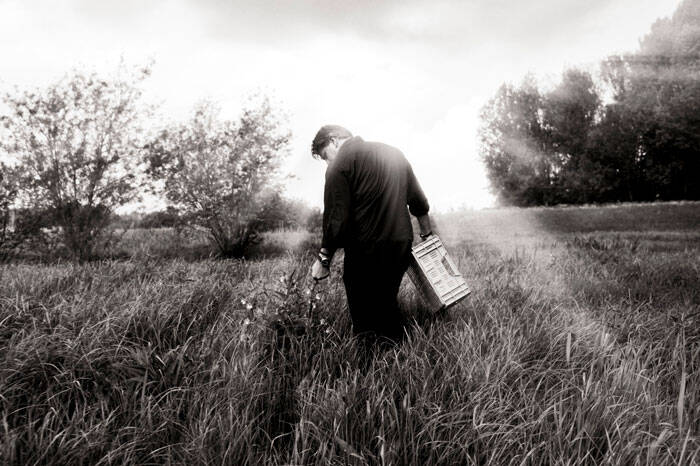
Finally: Jonnie is also typically Dutch in another way. He is informal, averse to hierarchy and resourceful. He follows his own path and doesn’t care about culinary trends. In the same way Mozart saw the piano and Cruijff saw the ball, Jonnie sees the kitchen. He is the Dutch kitchen, an idiosyncratic talent who follows his feelings. Of course, he falls and makes mistakes, but he learns and perseveres.
At the Food Inspiration Days in 2011, he caused furore by offering all visitors to this event something special: a playful reference to the Dutch identity, but then wrapped in a three-star Michelin jacket: the edible sigaret! A gourmet spliff served in a plastic tube, of course with no hallucinogenic effect. The Michelin sigaret with lemongrass was given a standing ovation, from more than a thousand colleagues.
Of course Thérèse and Jonnie listen to their guests. Their satisfaction is the most important. But during the creative process when new dishes are being created, they don’t let other people's opinions distract them. The process of creation starts with Jonnie himself, from his memories of Giethoorn, his discoveries, new techniques he learns and associations he comes up with himself. After creating something new, they will only ask their guests if the taste is to their liking. By working in this order - Jonnie makes sure his inspiration comes from within and not from what’s popular in the outside market. It guarantees authenticity in its greatest form. And with that, Jonnie Boer has become the international face of Dutch gastronomy.
Authentic approach
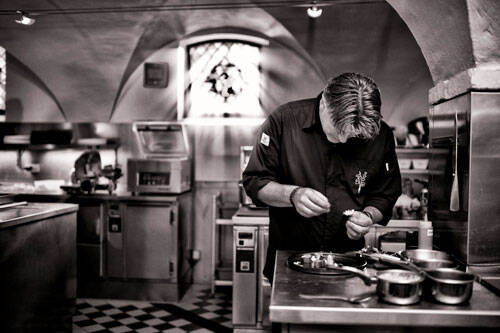
Jonnie’s restaurant is located in the historic city center of Zwolle, about 100 kilometers east of Amsterdam. But in fact, the place where he grew up and where he discovered the secrets of nature is Giethoorn, also called Dutch Venice because of the many bridges and waterways. The video below depicts Jonnie in the waters around Giethoorn. He rides in a "punt (point)” the name of the wooden boat that used to carry cargo.
Jonnie is inseparable from his wife Thérèse Boer, the restaurant's maître sommelier. Just like Jonnie, Thérèse has also reached the pinnacles of her profession. She is considered one of the best hostesses and sommeliers in the Netherlands. Together they create the authentic style of their restaurant De Librije.
Dutch Venice
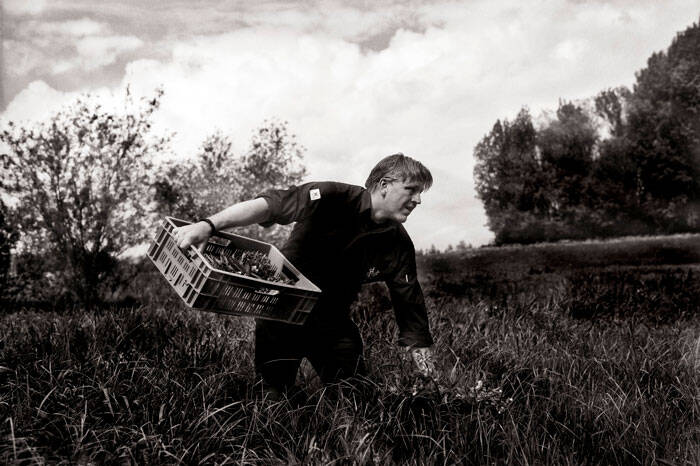
With the arrival of Jonnie Boer, Dutch gastronomy changed into a kitchen in which you can recognize time and place. Boer never traveled to France to learn the trade. Instead he had the greatest teacher: Dutch nature. “I don't see the point in getting beans from Kenya if I can replace them with a Dutch salad or string bean”, he says in his inspiring cookbook Puurst. And so we read how Jonnie uses meadowsweet, cattail and how he puts tulip bulbs on his menu.
Jonnie uses a lot of special techniques. For example, early on he learned how to milk birch trees. Through a hole in the bark, via a hose, he lets the juice of the tree run into a bottle. Back in the day juice from birch trees was the lifeblood for lumberjacks and was therefore called lumberjack's milk. Jonnie now boils the milk into a thick syrup and uses it in desserts.
Tulip bulbs
To understand the revolutionary aspect of his approach, we should realize that gastronomy in the Netherlands only got its own identity during the 1980s and 1990s. The food culture of the Netherlands before that time – developed after the Second World War – was entirely French inspired. If you wanted to make a name for yourself as a chef, you knocked on the door of a French restaurant where you were taught the trade in a heavy-handed manner. That knowledge was taken back to the Netherlands and sold unadulterated. So in the Netherlands, people were cooking and eating French for a long time.
There’s no other chef in the Netherlands as Dutch as Jonnie Boer. And by Dutch we don't mean that he bakes the best pancakes or serves fries with mayonnaise instead of ketchup. No, the chef is the most Dutch, because in his kitchen, regional ingredients have the leading role, even before this became the common mantra of the modern top chef.
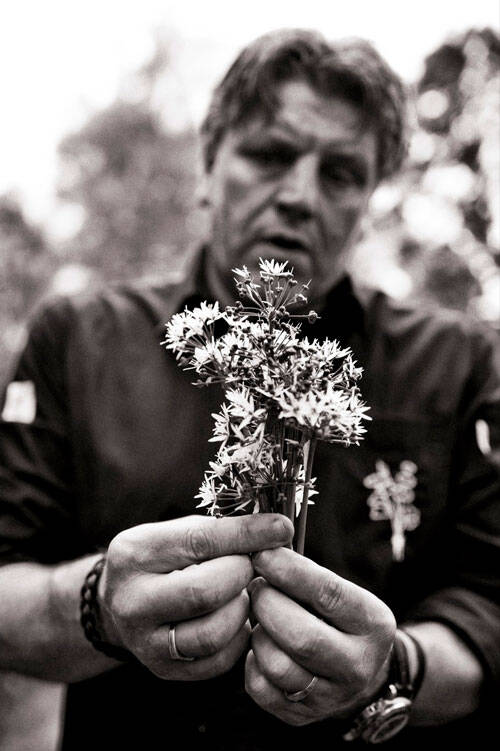
He is considered to be the most prominent chef in the Netherlands. Jonnie Boer, awarded with three Michelin stars since 2004, focuses on the flavor of his region. He himself sails the Dutch waters, catches pike and eel and harvests his own plants, the same way his ancestors did. If the word authentic is worn out, look, listen and taste the universe of Jonnie Boer. A more pure kitchen doesn't exist.
Hans Steenbergen Rahi Rezvani Jonnie Boer
Xiao Er Kong
Authenticity means remaining true to yourself
Master of the Dutch cuisine
Jonnie Boer
6 min
